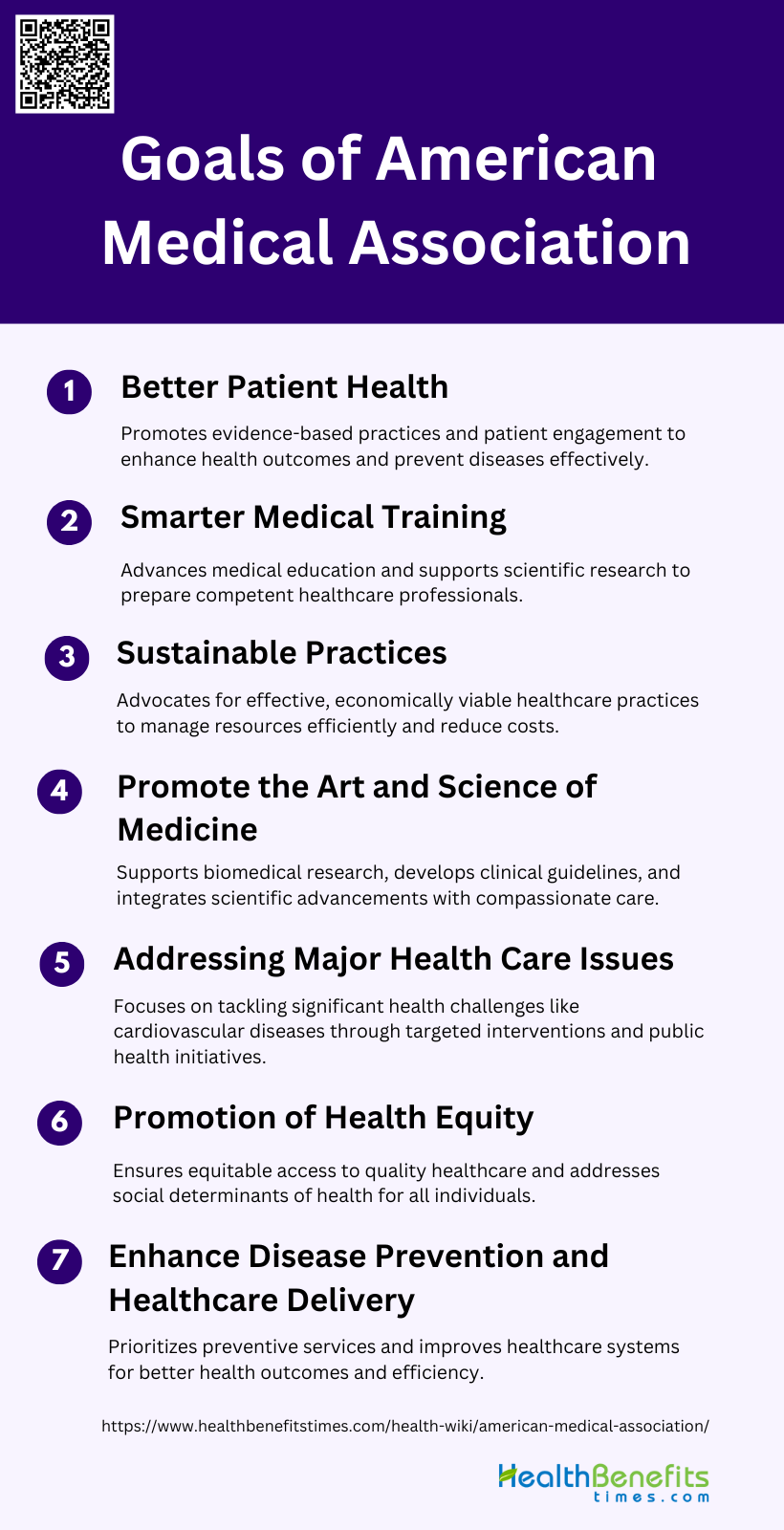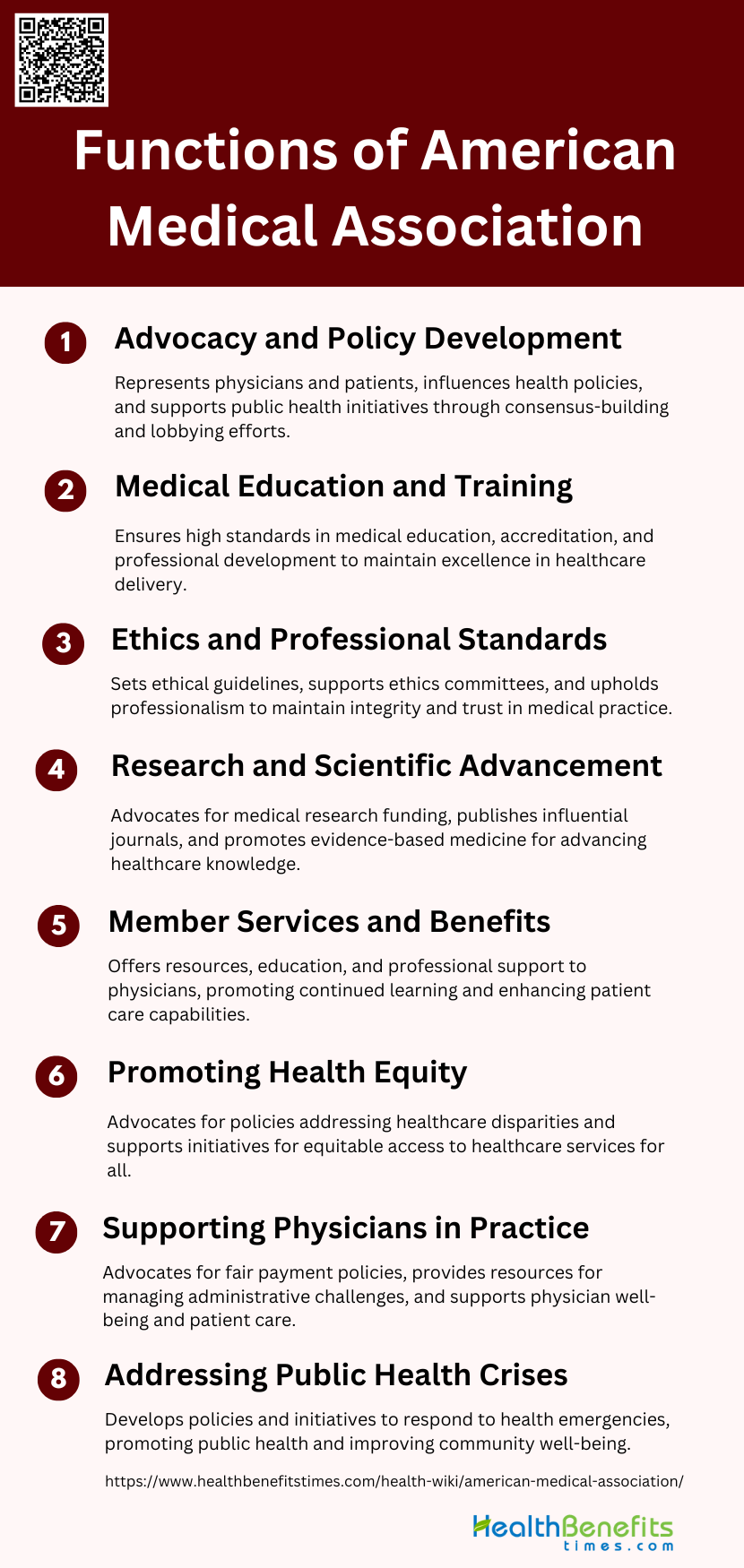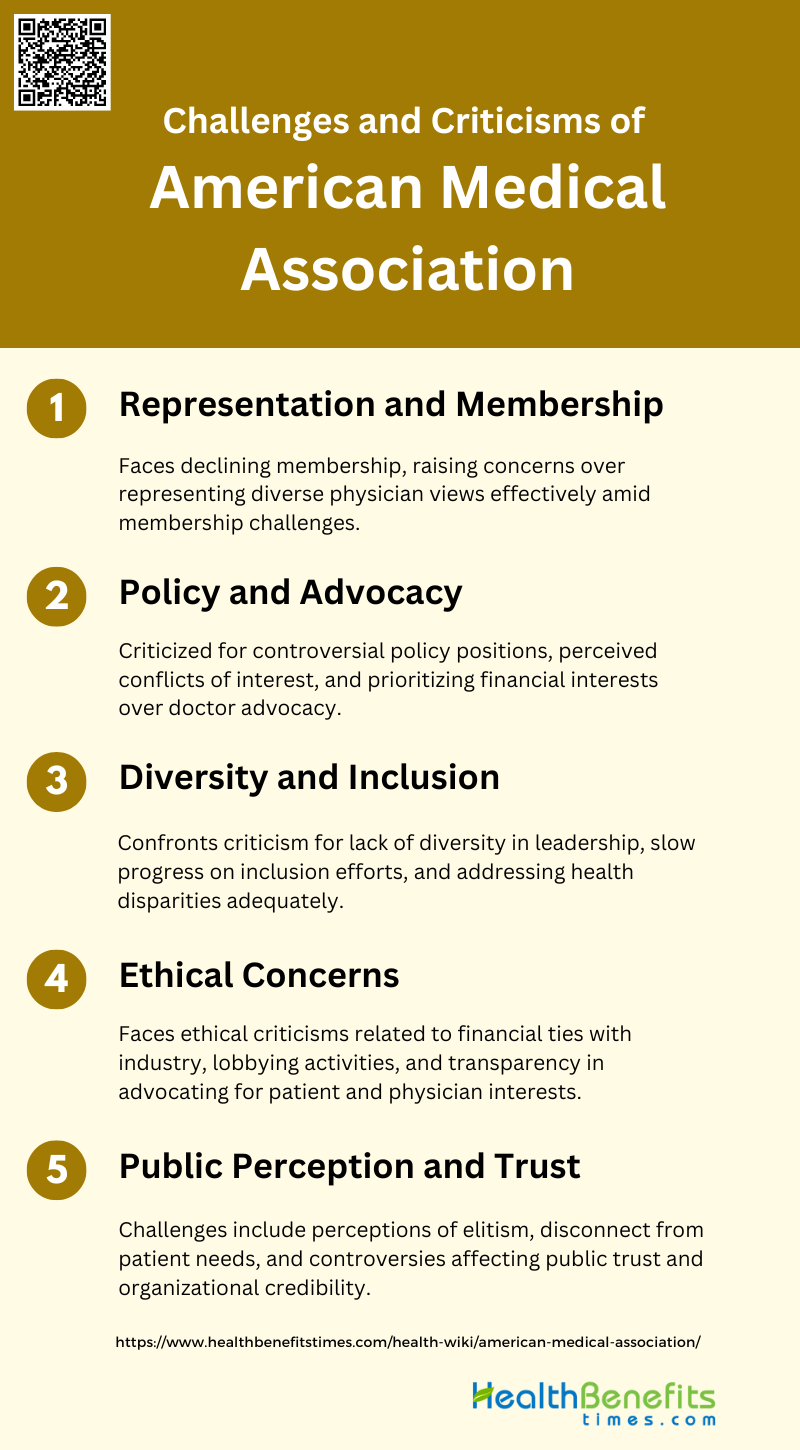The American Medical Association (AMA) is a professional organization founded in 1847 with the primary objectives of promoting the science and art of medicine and improving public health. Over the years, the AMA has expanded its activities and services to support these goals, adapting to the rapid advancements in medical knowledge and technology. The organization plays a significant role in shaping healthcare policy, as evidenced by its influential campaign contributions and advocacy efforts. The AMA also addresses critical issues such as racial and ethnic health inequities, recognizing the impact of racism on public health and working towards more equitable healthcare delivery. The association’s leadership and guidance have been instrumental in advancing medical practice and public health, making it a cornerstone of the medical community in the United States.
History of American Medical Association
The American Medical Association (AMA) was founded in 1847 in Philadelphia with the primary goal of improving medical education and elevating the standards of medical care in the United States. The establishment of the AMA was part of a broader social movement towards the organization, professionalization, and specialization of various disciplines in mid-19th century America, influenced by economic, political, and scientific changes such as industrialization and urbanization. The AMA played a crucial role in shaping the national identity of the medical profession, often reflecting the racial and gender politics of its time, as seen in its 1870 decision to deny admission to black delegates and their white colleagues. Over the years, the AMA has been instrumental in the creation of specialty boards, such as the American Board of Ophthalmology, which helped establish educational standards and advance medical excellence. The association has also been a platform for addressing public health issues, as exemplified by the inaugural address of its 162nd president, Ronald M. Davis, who emphasized the importance of integrating clinical medicine with public health. Throughout its history, the AMA has remained committed to its founding objectives, holding annual sessions to report on medical progress and health conditions, thereby maintaining its influence on the medical profession and public health in the United States.
Goals of American Medical Association
The American Medical Association (AMA) is dedicated to promoting the art and science of medicine and the betterment of public health. To achieve these objectives, the AMA focuses on several key goals aimed at improving medical practice, education, and patient care. These goals include:
1. Better Patient Health
The American Heart Association (AHA) has set ambitious goals to improve cardiovascular health by 20% and reduce deaths from cardiovascular diseases and stroke by 20% by 2020. This involves educating patients on risk factors and encouraging healthy behaviors such as non-smoking, maintaining a healthy diet, and regular physical activity. By focusing on both prevention and effective management of diseases, the AMA strives to ensure better health outcomes for all patients.
2. Smarter Medical Training
This includes supporting scientific discovery and the next generation of healthcare professionals and researchers. The AHA emphasizes the importance of disseminating scientific information and developing evidence-based guidelines to ensure that healthcare providers are well-equipped to deliver high-quality care. By fostering a culture of continuous learning and improvement, the AMA aims to enhance the skills and knowledge of medical professionals.
3. Sustainable Practices
Sustainability in healthcare is crucial for long-term success. The AMA advocates for practices that are not only effective but also economically viable. The AHA’s focus on preventing cardiovascular diseases through lifestyle changes and early interventions can significantly reduce healthcare costs. By promoting health behaviors and addressing risk factors early, the AMA aims to create a more sustainable healthcare system that can manage resources efficiently while delivering high-quality care.
4. Promote the Art and Science of Medicine
The AMA is dedicated to promoting both the art and science of medicine. This involves supporting biomedical research, developing clinical guidelines, and advocating for the implementation of performance measures. The AHA’s initiatives to translate research into practice and develop quality improvement tools are aligned with this goal. By integrating scientific advancements with compassionate patient care, the AMA seeks to elevate the practice of medicine to benefit both patients and healthcare providers.
5. Addressing Major Health Care Issues
The AMA is focused on addressing major healthcare issues such as cardiovascular diseases, which remain a leading cause of death. The AHA’s strategic goals include improving cardiovascular health and reducing mortality rates through targeted interventions and public health initiatives. By collaborating with various stakeholders, including policymakers and healthcare professionals, the AMA aims to tackle these pressing health challenges and improve overall public health.
6. Promotion of Health Equity
Health equity is a core objective of the AMA, ensuring that all individuals have access to quality healthcare regardless of their background. The AHA has committed to eliminating disparities in healthcare delivery and strengthening public health infrastructure to address social determinants of health. By focusing on equitable access to care and culturally competent healthcare practices, the AMA strives to create a more inclusive and fair healthcare system.
7. Enhance Disease Prevention and Healthcare Delivery
Enhancing disease prevention and healthcare delivery is a priority for the AMA. The AHA’s initiatives to promote healthy behaviors and manage cardiovascular risk factors are key components of this goal. By developing evidence-based preventive services and improving healthcare delivery systems, the AMA aims to prevent diseases before they occur and ensure that patients receive timely and effective care. This comprehensive approach to healthcare can lead to better health outcomes and a more efficient healthcare system.
Functions of American Medical Association
The American Medical Association (AMA) plays a pivotal role in shaping the future of healthcare in the United States. By setting standards for medical education, advocating for physicians and patients, and promoting public health initiatives, the AMA ensures the continuous improvement of the medical profession. The primary functions of the AMA include:
1. Advocacy and Policy Development
The AMA plays a crucial role in advocacy and policy development, representing physicians and patients alike. The AMA’s House of Delegates sets the course for the organization, ensuring that policies are developed through a consensus-building process that includes input from a wide range of medical professionals. The AMA has been actively involved in lobbying for medical research funding, contributing to significant budget increases for the National Institutes of Health and preserving funding for the Agency for Health Care Policy and Research. Additionally, the AMA has taken strong stances on public health issues, such as tobacco control and domestic violence, demonstrating its commitment to advocating for sound and sustainable health policies.
2. Medical Education and Training
The AMA is deeply involved in medical education and training, participating in organizations that accredit medical education to maintain high standards. The AMA’s Committee on Allied Health Education and Accreditation (CAHEA) plays a significant role in ensuring the quality of education for allied health personnel, which is crucial for maintaining an adequate supply of qualified professionals. Furthermore, the AMA supports various educational initiatives, such as the National Patient Safety Foundation, which aims to improve patient safety through better education and training of healthcare professionals. These efforts highlight the AMA’s commitment to fostering excellence and professionalism in the practice of medicine.
3. Ethics and Professional Standards
The AMA sets high ethical and professional standards for its members, guided by the Principles of Medical Ethics. These standards are designed to ensure that physicians adhere to ethical practices in their professional conduct. The AMA also supports the formation and functioning of ethics committees in healthcare facilities, which play a vital role in case reviews, policy formation, and education. These committees often include a diverse range of professionals, such as nurses, physicians, social workers, and clergy, to ensure comprehensive ethical oversight. By promoting ethical standards and supporting ethics committees, the AMA helps maintain the integrity and trustworthiness of the medical profession.
4. Research and Scientific Advancement
It has been a strong advocate for increased funding for medical research, contributing to significant budget increases for key research institutions. The AMA also supports the publication of influential medical journals and the development of diagnostic and treatment guidelines, ensuring that medical practice is informed by the latest scientific evidence. Additionally, the AMA’s involvement in the accreditation of medical education programs helps ensure that future healthcare professionals are well-equipped with the latest scientific knowledge and research skills. These efforts underscore the AMA’s dedication to promoting scientific advancement in medicine.
5. Member Services and Benefits
The AMA offers a range of services and benefits to its members, aimed at supporting their professional development and practice. These include reduced membership dues for young physicians, which encourages continued participation in organized medicine. The AMA also provides valuable resources, such as continuing medical education, certification processes, and access to medical journals. These services help physicians stay updated with the latest medical knowledge and maintain their professional credentials. By offering these benefits, the AMA supports its members in their professional growth and ensures that they have the tools and resources needed to provide high-quality care to their patients.
6. Promoting Health Equity
It advocates for policies and processes that aim to improve the health of all individuals, especially the most vulnerable populations. The AMA’s initiatives, such as the Coalition of Physicians against Family Violence and anti-tobacco campaigns, demonstrate its commitment to addressing social determinants of health and promoting equitable healthcare access. By focusing on health equity, the AMA strives to ensure that all patients receive fair and just treatment, regardless of their background or circumstances.
7. Supporting Physicians in Practice
This includes advocating for fair physician payment policies and national health insurance, which are crucial for the financial stability of medical practices. The AMA also offers resources and guidelines to help physicians manage administrative burdens and regulatory requirements, allowing them to focus more on patient care. By supporting physicians in their practice, the AMA helps ensure that they can provide high-quality care to their patients while maintaining their professional well-being.
8. Addressing Public Health Crises
The AMA plays a vital role in addressing public health crises by developing and promoting policies and initiatives that respond to emerging health threats. For example, the AMA has been actively involved in anti-tobacco campaigns, creating coalitions and guidelines to reduce smoking rates and improve public health. The AMA also formed the National Patient Safety Foundation to address medical errors and improve patient safety. These efforts demonstrate the AMA’s commitment to protecting public health and responding effectively to crises that impact the well-being of communities. By addressing public health crises, the AMA helps safeguard the health of the population and promotes a healthier society.
Challenges and Criticisms of American Medical Association
The American Medical Association (AMA) has faced various challenges and criticisms over the years, impacting its influence and operations. These issues range from internal governance disputes to external pressures from evolving healthcare policies and public expectations. Some of the key challenges and criticisms include:
1. Representation and Membership
The AMA has faced declining membership rates over the past several decades, with only about 15% of practicing U.S. physicians currently belonging to the organization. This has raised questions about how well the AMA truly represents the diverse views of American doctors. Critics argue that the AMA’s policies and positions may not accurately reflect the opinions of most physicians. The organization has tried various initiatives to boost membership, including offering tiered memberships and tailoring benefits to different career stages, but reversing the downward trend has proven challenging. This membership decline threatens to weaken the AMA’s influence and credibility as the national voice of the medical profession.
2. Policy and Advocacy
Its support for the Affordable Care Act was controversial among physicians; with some feeling the AMA did not adequately represent their interests. The organization has also faced accusations of prioritizing its own financial interests over those of doctors, particularly regarding relationships with pharmaceutical companies and the government. Critics argue the AMA’s extensive lobbying activities and dependence on government funding raise conflict of interest concerns. Additionally, some physicians feel the AMA takes overly narrow political stances and suppresses dissenting voices to maintain alignment with government agendas, rather than advocating for the diverse views of doctors.
3. Diversity and Inclusion
While the AMA has made efforts to improve diversity and inclusion, challenges remain. The organization has historically been criticized for a lack of diversity in its leadership and membership. In recent years, the AMA has taken steps like forming an Equity, Inclusion and Diversity Committee, producing an anti-racism statement, and setting targets for female representation on boards and committees. However, progress has been slow – for example, the AMA has only had two female presidents in its history. Additionally, some argue the AMA has not done enough to address health disparities and inequities affecting minority communities. Improving diversity and inclusion remains an ongoing challenge for the organization.
4. Ethical Concerns
The AMA has faced ethical criticisms related to conflicts of interest and its relationships with industry. Some argue that the organization’s financial ties to pharmaceutical companies and medical device manufacturers compromise its ability to advocate objectively for patients and physicians. The AMA generates significant revenue from its ownership of medical coding systems and databases, which some view as a conflict with its role in shaping health policy. Additionally, the organization’s lobbying activities and political donations have raised questions about whose interests it truly serves. While the AMA has conflict of interest policies in place, critics contend that more transparency and stricter ethical guidelines are needed.
5. Public Perception and Trust
Some view the organization as out of touch with the needs of patients and everyday physicians, instead serving the interests of elite doctors and healthcare corporations. The AMA’s stances on issues like Medicare for All have been criticized as prioritizing the financial interests of doctors over expanding access to care. Additionally, controversies around the AMA’s historical positions on issues like racial segregation in medicine have damaged its reputation. Rebuilding public trust and demonstrating that it truly represents the interests of both physicians and patients remains an ongoing challenge for the AMA.





